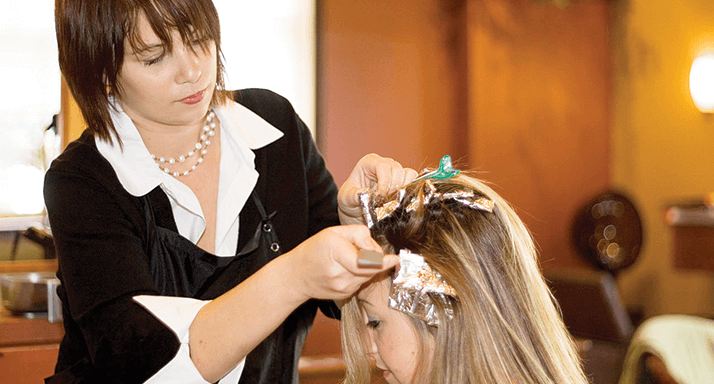
In the 1970s, the majority of aromatic amines that were found to cause cancer in animals were phased out of hair dyes by manufacturers. However, the debate over whether hair dyes still contain mutagenic and carcinogenic chemicals continues. Now, researchers from Lund University in Sweden provide evidence that concentrations of ortho-toluidine in the blood of hairdressers increases with the number of treatments given per week using both light-color permanent hair dyes and hair waving treatments (1). The US Environmental Protection Agency has classified ortho-toluidine as a “probable human carcinogen” (2).
The Lund study analyzed blood samples from 295 hairdressers, 32 consumers and 60 control subjects who had not dyed their hair in the past year for eight potentially carcinogenic aromatic amines (ortho-, meta- and para-toluidine; 2-, 3- and 4-ethylaniline; and 2,3- and 3,4-dimethylaniline). To assess long-term exposure, the researchers looked at those aromatic amines that had bound to hemoglobin to form ‘adducts,’ which have a life span of four months. “We used liquid phase extraction to extract the aromatic amines from the blood to hexane,” explains Gabriella Johansson, a doctoral student at Lund University and first author of the study. “The samples were then analyzed using gas chromatography-tandem mass spectrometry. The results obtained in picograms were recalculated into picogram/gram hemoglobin.”
A comparison of the adduct concentrations found in hairdressers, consumers and controls samples showed no statistically significant difference for six of the aromatic amines. However, the levels of ortho- and meta-toluidine significantly increased with the weekly number of treatments performed using light hair dye and waving products. According to Johansson, meta-toluidine has been assessed as “not classifiable as carcinogenic to humans,” owing to lack of data. The study included practical advice for hairdressers to help reduce their exposure to ortho-toluidine, and noted that while low levels should not produce a significant risk, any exposure should be considered undesirable. The researchers will follow up on the study by measuring selected aromatic amines in different hair dyes and hair waving products in Sweden so that possible measures can be discussed.
References
- G. Johansson et al., “Exposure of Hairdressers to Ortho-and Meta-toluidine in Hair Dyes”, Occup. Environ. Med. doi:10.1136/oemed-2013-101960 (2014). www.epa.gov/ttn/atw/hlthef/methylan.html#ref6
